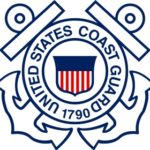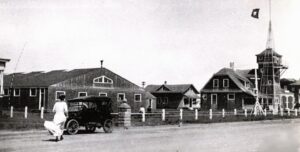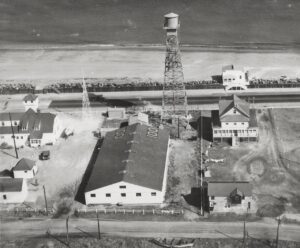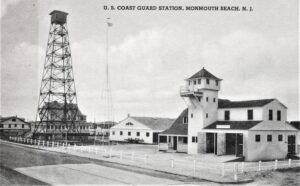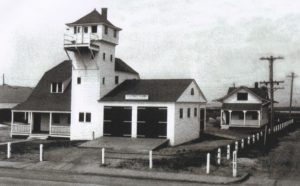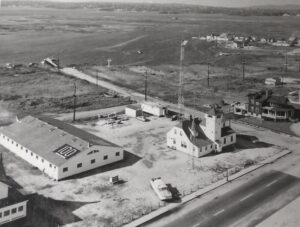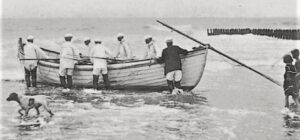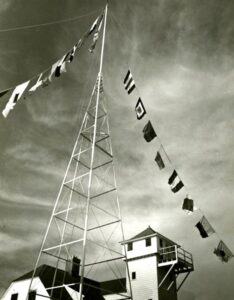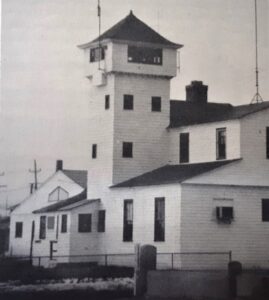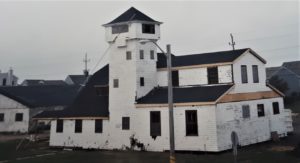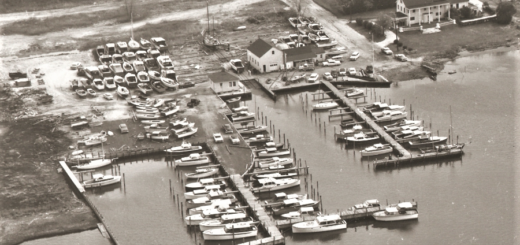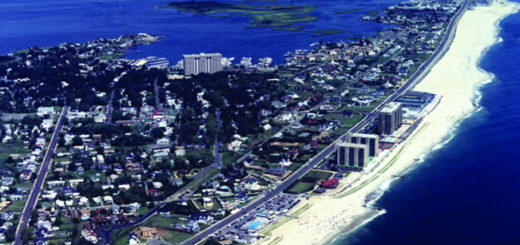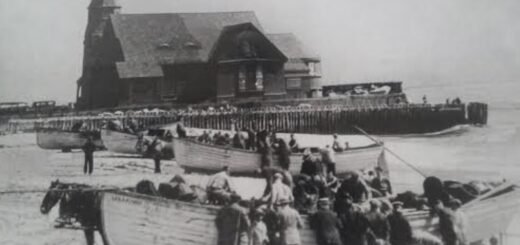USCG History in Monmouth Beach
The United States Coast Guard has a long history of service and sacrifice — even in Monmouth Beach.
In January 1915, the US Life-Saving Service was incorporated into the United States Coast Guard. This included the large property and 4,200-square-foot building in Monmouth Beach on Ocean Avenue (the area was known locally as Galilee).
That facility built in 1895 is today the Monmouth Beach Cultural Center (it’s also the borough’s oldest pubic building). The USCG’s amazing legacy of service in Monmouth Beach makes preserving this spot — this home for “Sentinels of the Sea“— all the more meaningful.
Upon creation, the USCG became the “only maritime service dedicated to saving life at sea and enforcing the nation’s maritime laws.” At that time of merger the Monmouth Beach station keeper was Captain George W. Green, a 12-year veteran of many heroic rescue efforts.
The unofficial motto of the life-saving service was: “You have to go out but nothing says you have to come back.” The USCG kept the serious duty going. Such was the generational dedication, it wasn’t unusual for a father who served in the US Life-Saving Service to have a son who was a US Coast Guard member.
America’s coast guard had been founded by Alexander Hamilton in August 1790. As the nation’s first treasury secretary, he had concerns about smuggling on the seas. And news reports show the USCG stationed at MB getting its fair share of bootleggers during Prohibition times. Two busts in 1924 alone yielded nearly 200 cases of booze (there was gunfire in one confiscation).
By 1925, the USCG at Monmouth Beach (called Station #100) had built the first steel observation tower on the Jersey Shore. The 120-foot-high structure included a small hut on top. Then station keeper Capt. Carroll A. Osborne said coastal visibility from the tower was 25 miles. The watch was 24/7.
Chief Boatswain’s Mate John Salter was in MB command in the early 1940s. By the late 1940s, it was John J. O’Neil in charge. Beginning in 1947, the USCG employed its DUKW, a six-wheel-drive amphibious rescue vehicle (more popularly known as a “Duck”) to very good effect. This odd-shaped apparatus (is it a boat or a truck?) was a regular site during bad storms and floods in MB.
The USCG in Monmouth Beach remained active until 1951 when the location was reduced to “caretaker status.” Six of the eight men stationed at MB were transferred out and all water rescue operations ceased. A board chaired by USCG Rear Admiral Joseph Greenspun had first suggested closing the station in 1949. In strong opposition were area US Representative James Auchincloss, Monmouth Beach Mayor Sidney Johnson and other local shore officials. The leaders said the closure would leave 20 miles of unprotected coast between Sandy Hook and Shark River.
“Heroism feels and never reasons, and therefore is always right.”
—Ralph Waldo Emerson
Rep. Auchincloss (Yale-educated, Rumson mayor, WW I intelligence officer, and prosperous Wall Street stockbroker) was a congressman out of central casting — seasoned, successful, serious, and sober. As a Jersey Shore congressman for 11 terms beginning in 1943, Auchincloss was popular and effective. He out-polled Dwight Eisenhower in his NJ district in both of the president’s landslide election wins in 1952 and 1956. Auchincloss died in 1976.
Thanks to his efforts in Washington and ongoing local pressure, the station was briefly shut but reopened in June 1952. The station leader then was Chief Boatswain’s Mate George L. Everingham, (who retired from the USCG and went on to direct maintenance at Monmouth College for 20 years).
Still, all during the 1950s, the USCG sought a total shutdown for the MB station. Area leaders objected citing “the Shrewsbury Rocks” fishing area (a mile out to sea and dead center of Sea Bright and Monmouth Beach), which at summer has “the greatest concentration of party and sports fishing boats from Maine to Florida.” Many also thought the MB location the perfect spot to quickly launch any necessary marine aid on the both the river and the ocean.
No matter — the Sea Bright, Long Branch, Deal and Spring Lake coast guard stations had all shut in years prior (there were 8 USCG stations in Monmouth County in 1936). In a post-war world, shore protection wasn’t as vital. Plus, fewer marine disasters in general and a more modern, quicker Coast Guard meant the whole shore area was safer. The station was officially deactivated in 1957 and the USCG finally walked away from the “Monmouth Beach Lifeboat station” in 1964 — part of Johnson Administration budget cuts (Auchincloss and his clout retired that year). Chief Frank L. Bernhard was the MB commander at the end.
The NJ State Marine Police acquired the building and property through a Green Acres grant in 1965 and remained there for nearly 30 years. Before the Summer of 1992, state police officials, feed up dealing with an aging building ($130,000 in roof repairs was only a start), sought to close the MB unit.
Area officials again sought to keep the MB unit going but after a brutal December 1992 nor’easter (tides rose 9.2 feet above the mean low tide level) further damaged the building, the marine police left for good. With officials estimating a new USCG station in MB costing $2.5 million, NJ State Police Superintendent Col. Justin Dintino ordered the unit shutdown in March 1993. The building and grounds stood dormant and decaying for 6 years.
Facing a wrecker’s ball in April 1999, the MB Historical Society inspired townspeople to rally and save the historic building. Borough philanthropist Jay W. Ross agreed to fund a $110,000 large-scale rehabilitation effort, and Pat McConville managed the project with great care. In May 2000, the MB Cultural Center was opened under volunteer director Richard L. Keller (both Keller and McConville were MB police chiefs).
Today, a Board of Trustees and dedicated volunteer staff oversee a very popular seashore facility. Read its story here.
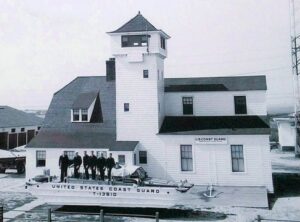
US Coast Guard station, 1958. The USCG operated out of this building on Ocean Avenue for nearly 50 years — 1915 to 1964.
* * * * *
Did You Know — On an average day, the US Coast Guard conducts 109 searches and rescues, saves 10 lives, seizes 169 pounds of marijuana and 306 pounds of cocaine worth $9.6 million, and investigates six vessel casualties.
—U.S. Coast Guard Boating Resource Center
